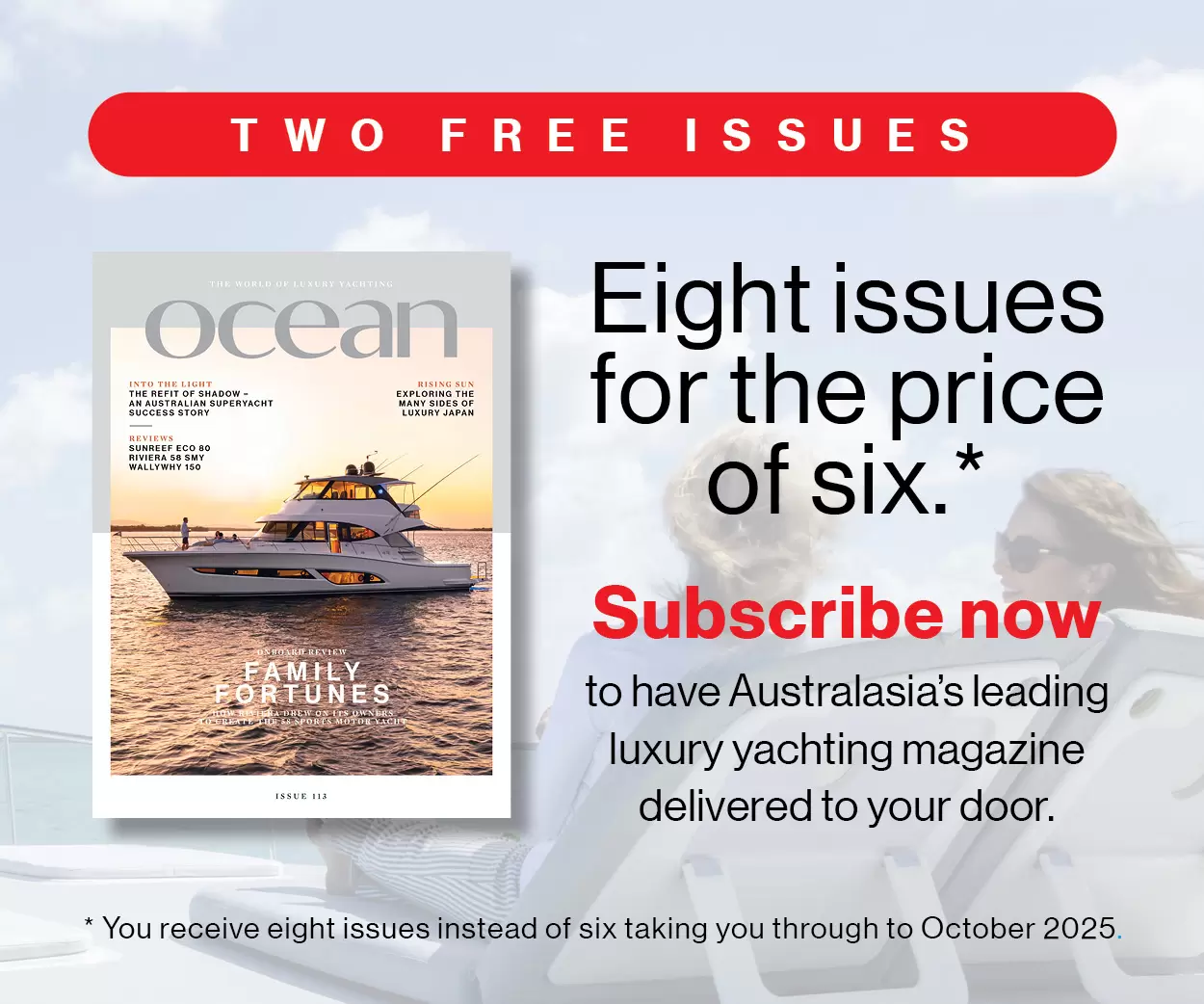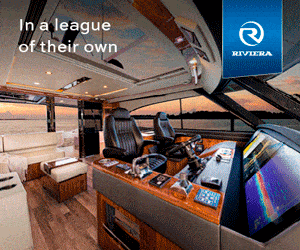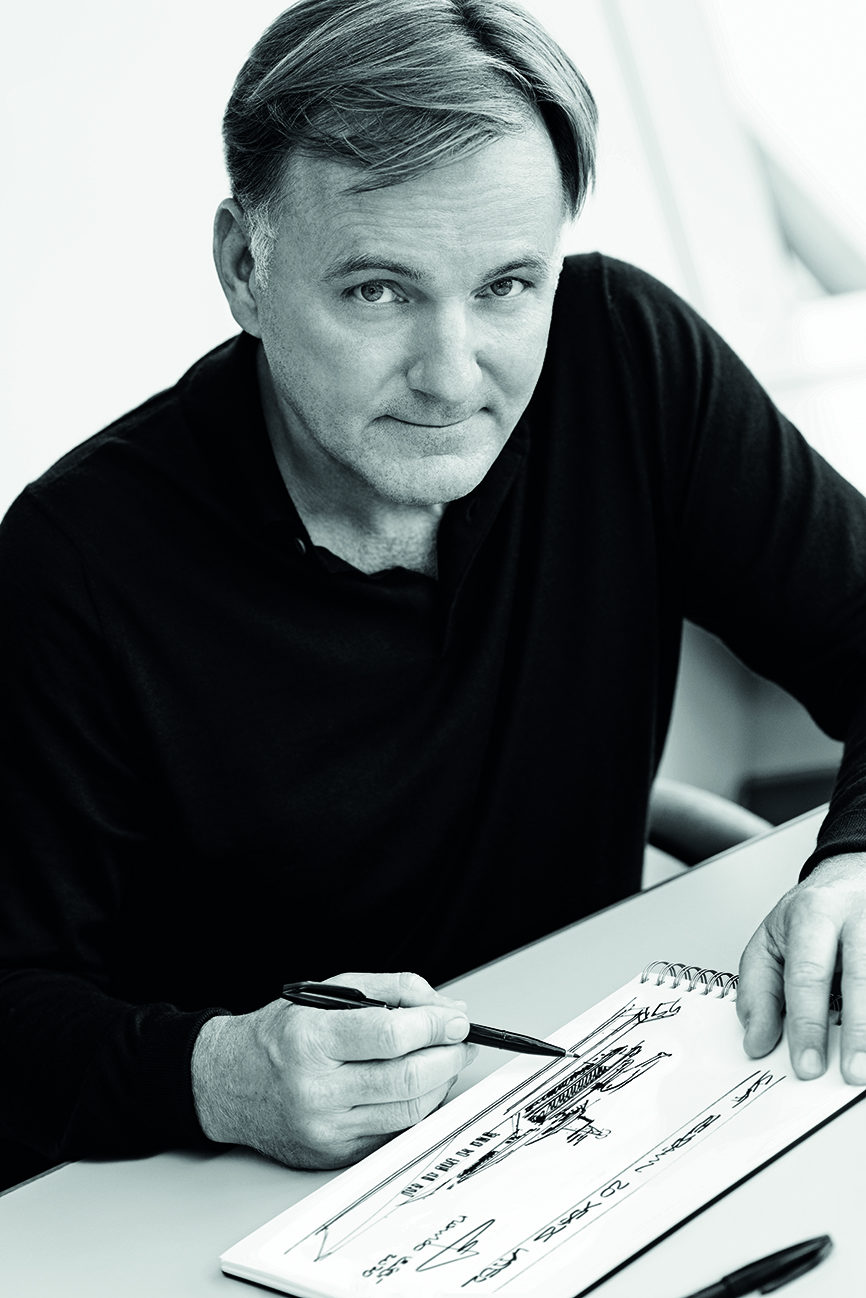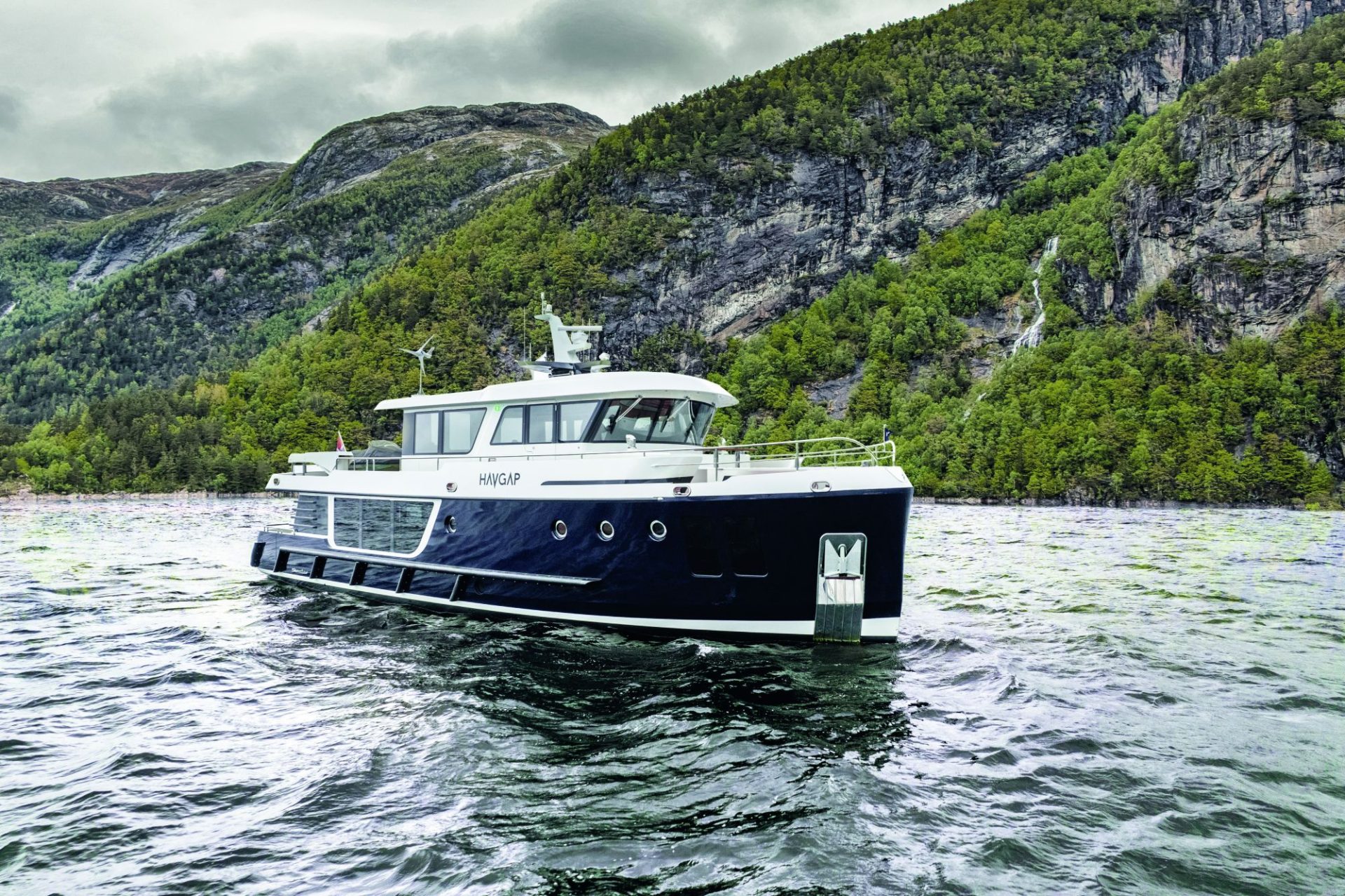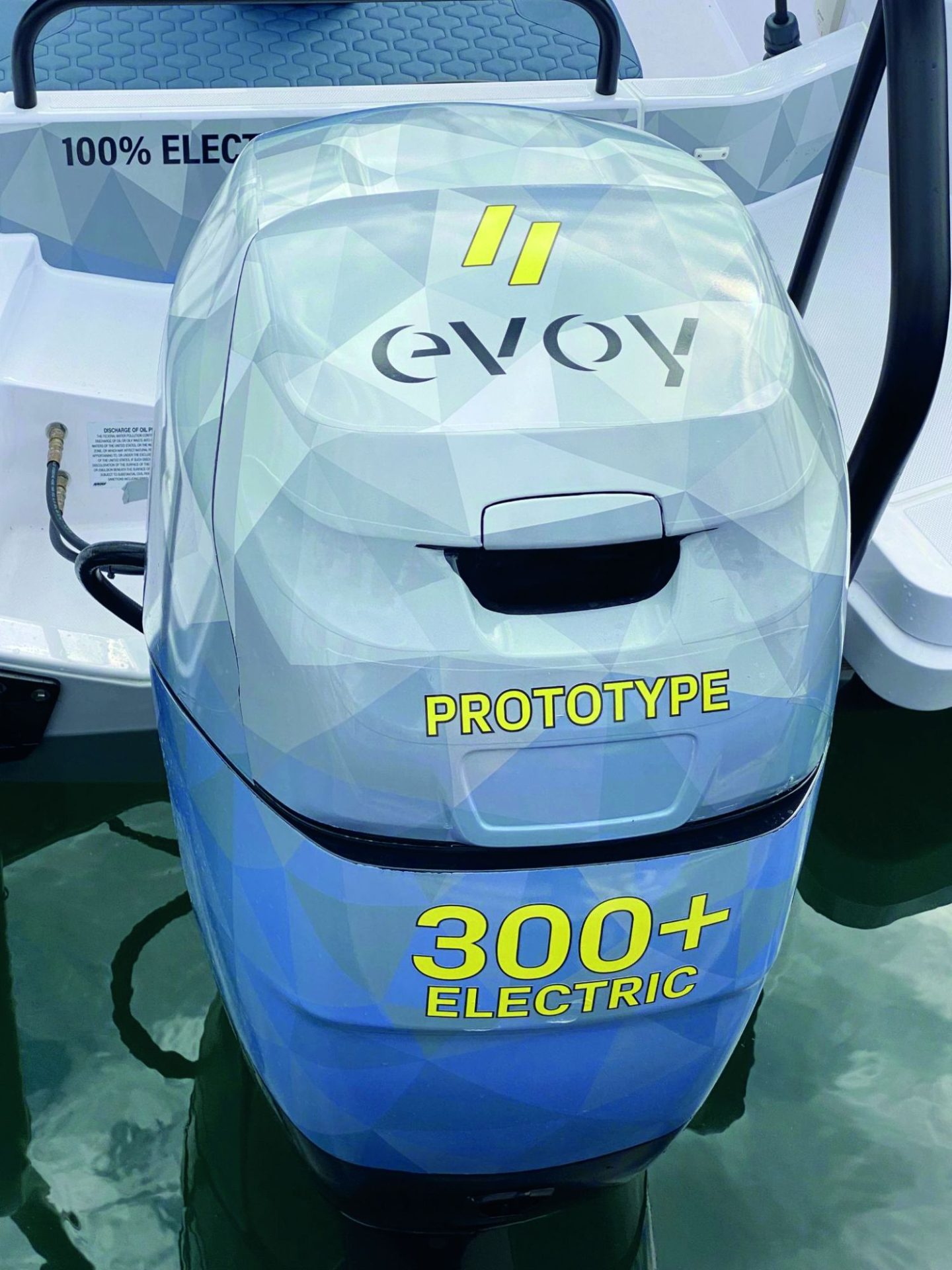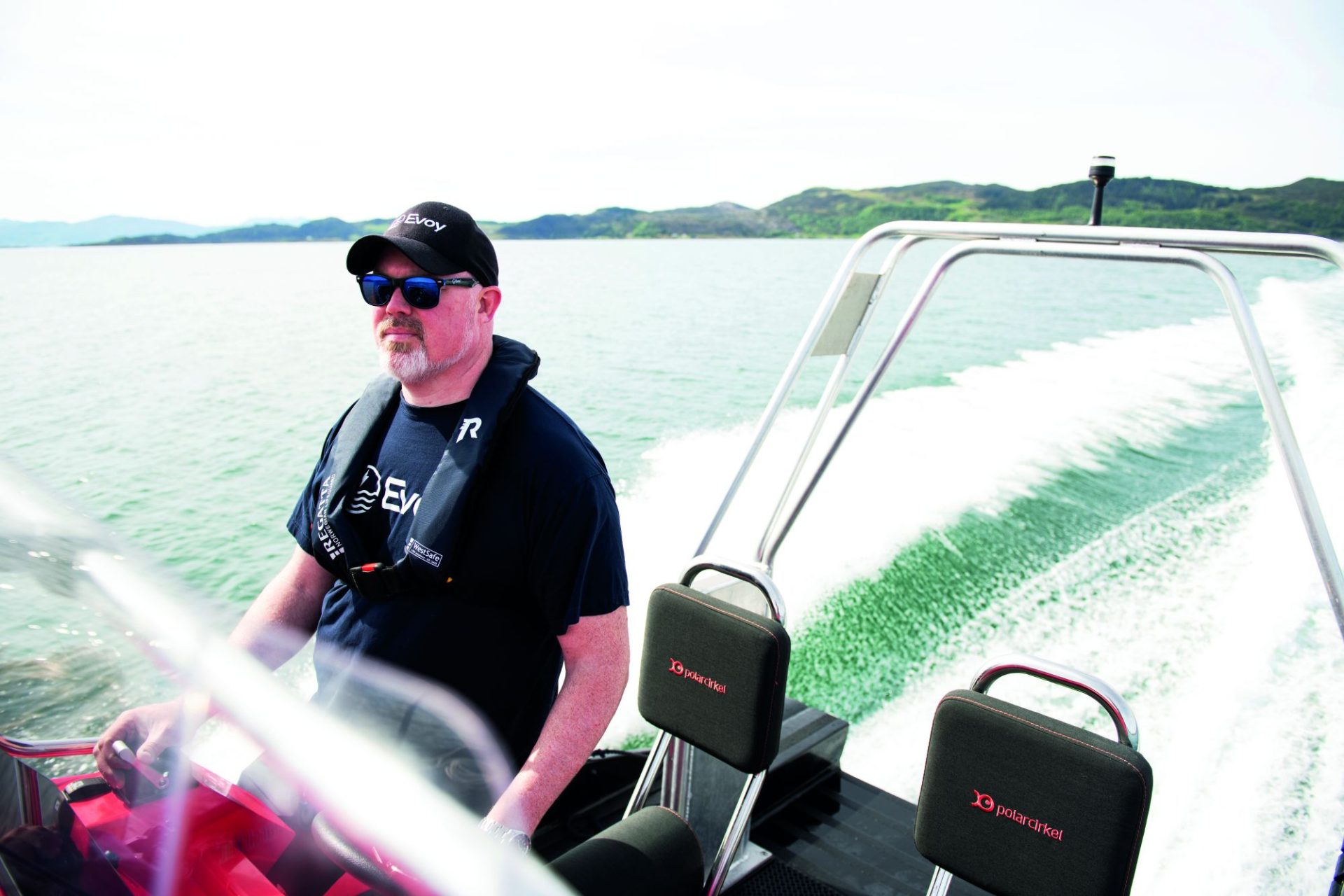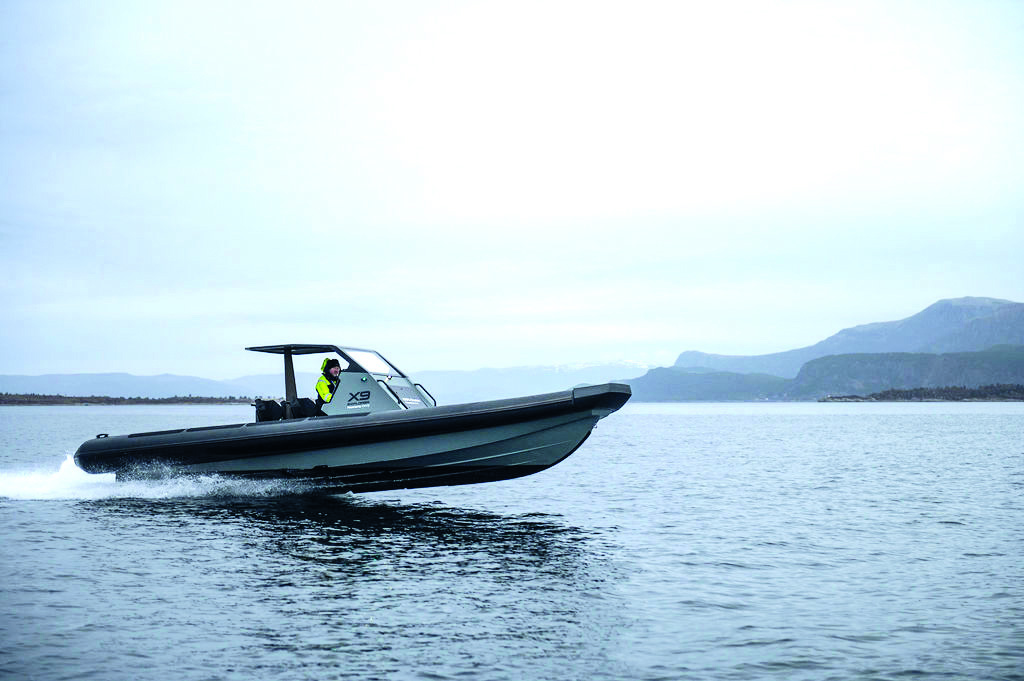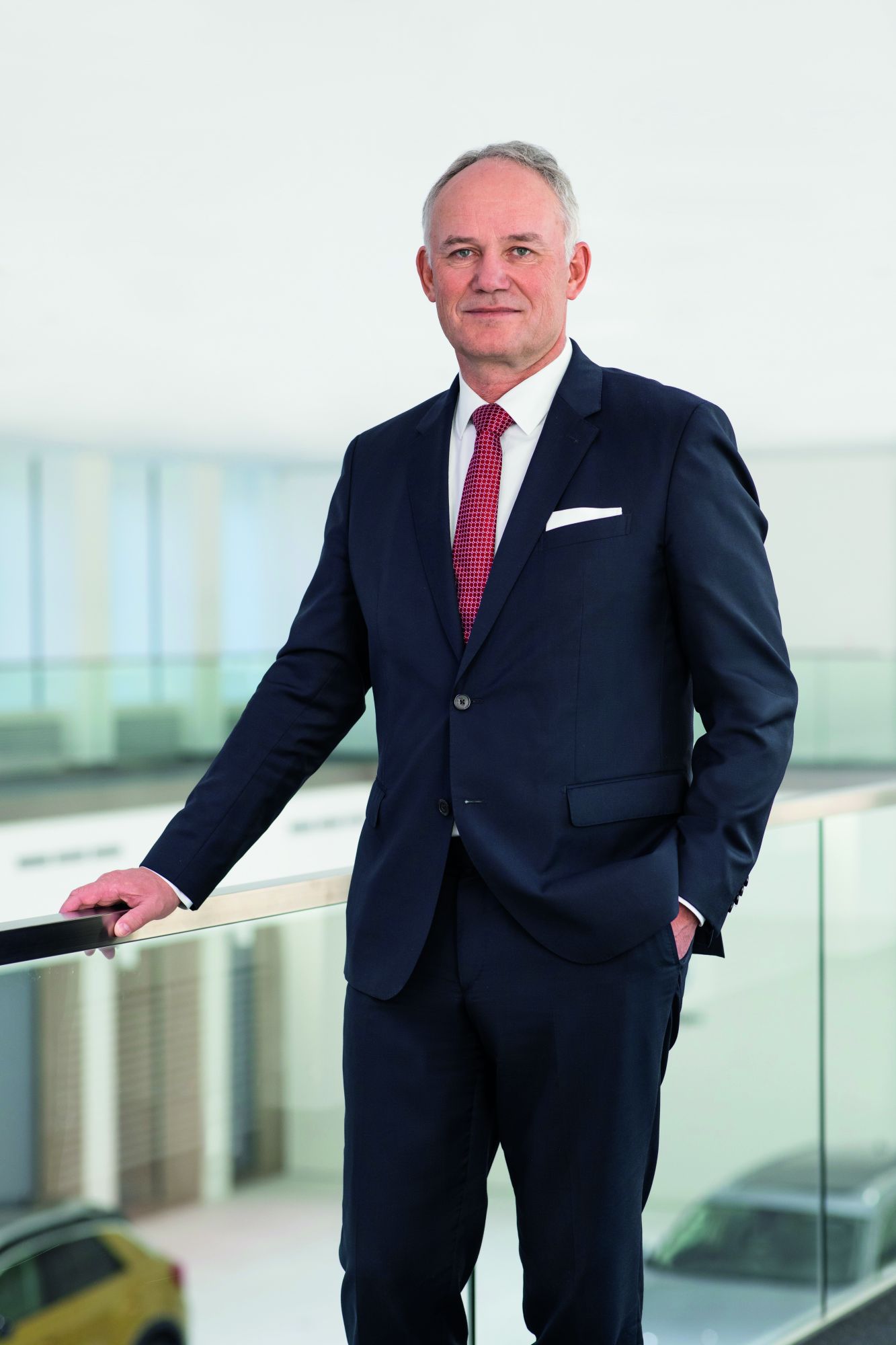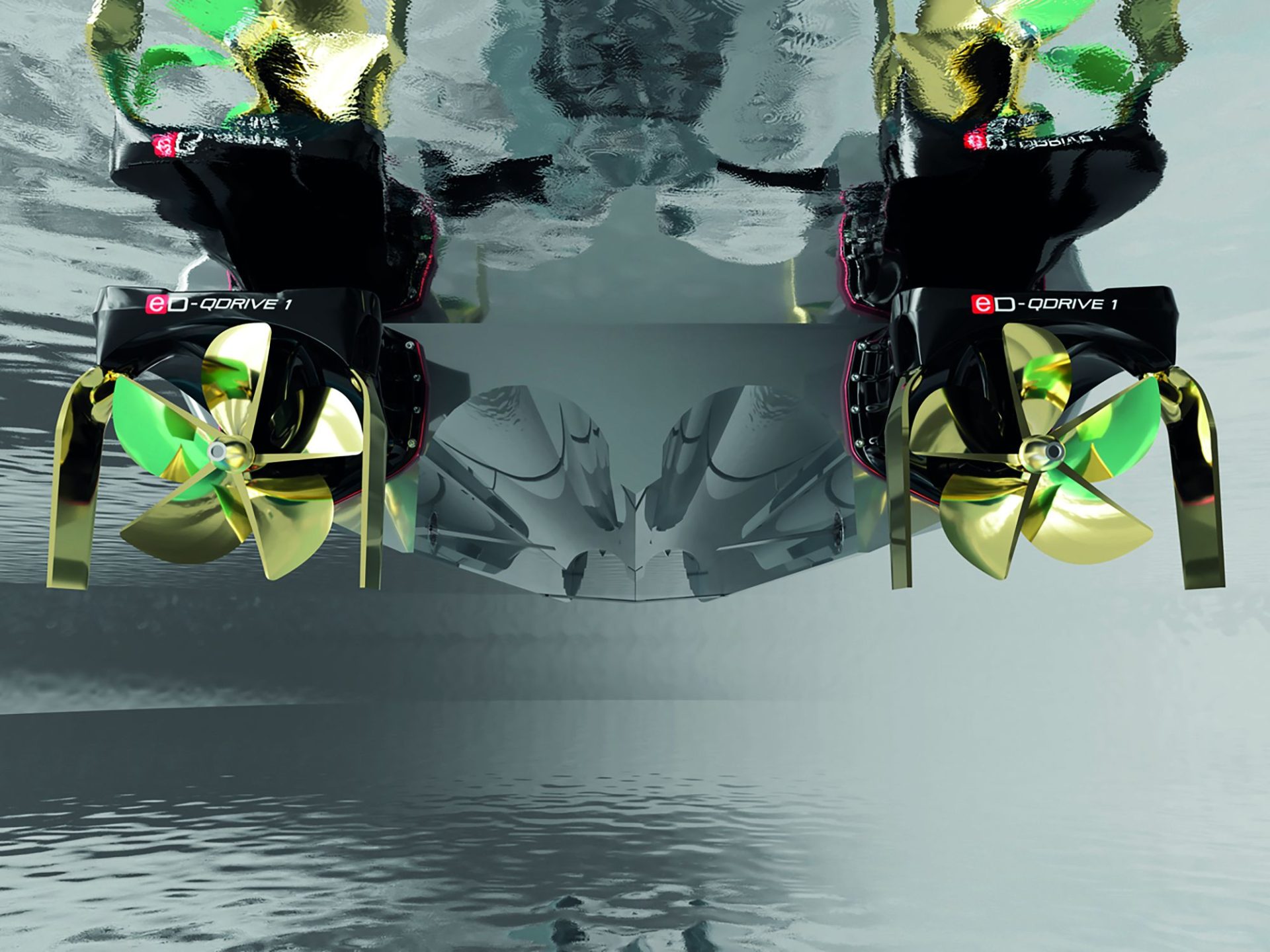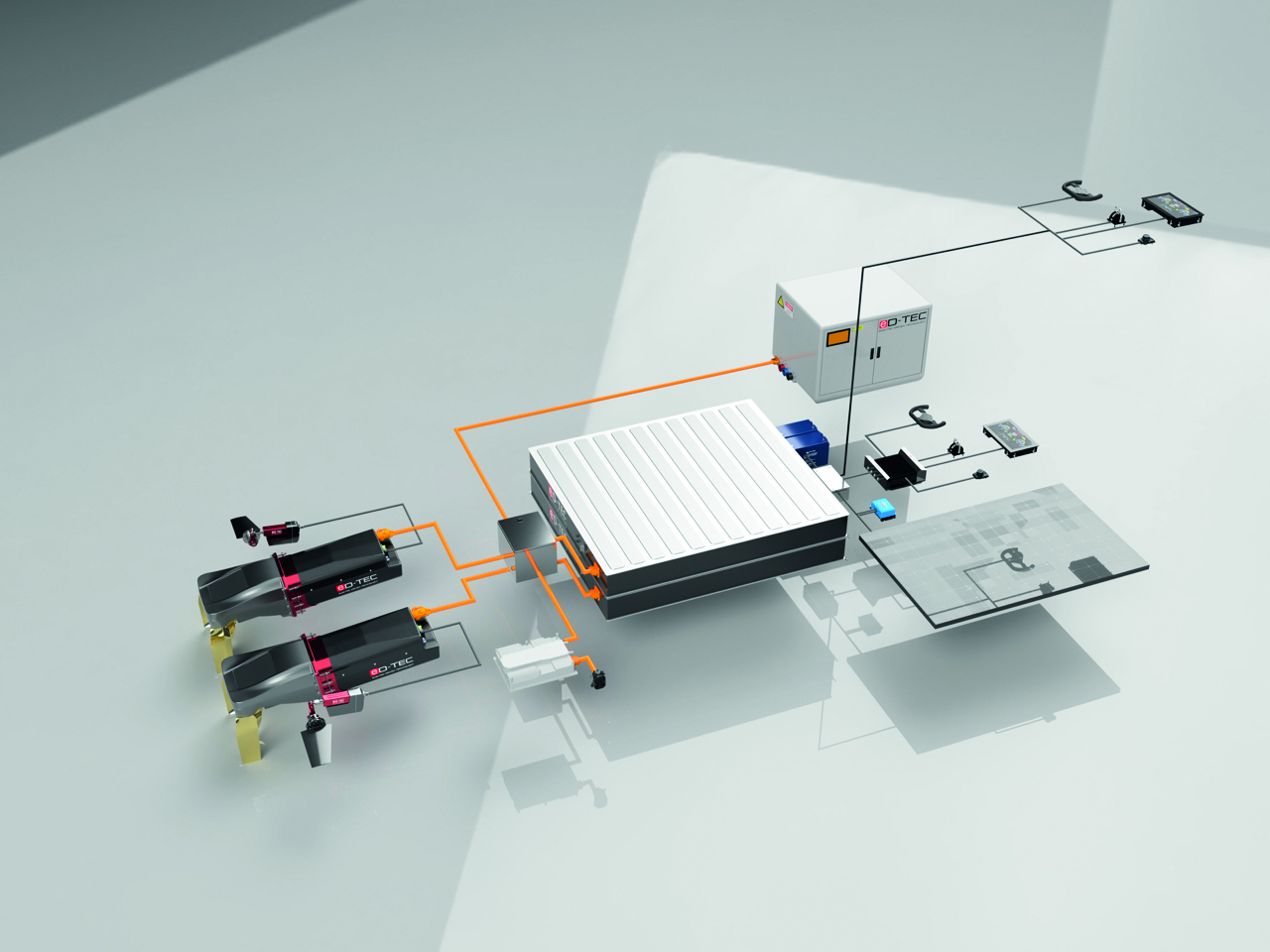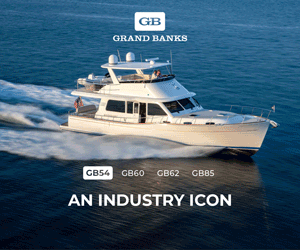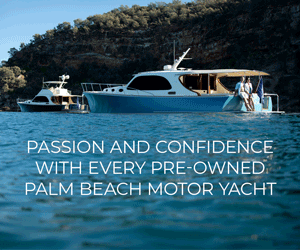Leading the charge
All-electric yachts may seem like a non-starter, particularly with the big distances around our coasts, but the future is not only inevitable, according to iconic yacht designer Espen Øino, they're not as unlikely a solution as you might think.
Written by Charlotte Thomas
07 June 2023
There’s a revolution brewing in the leisure marine sector – the electrification of the yacht industry is creeping up on us, just as surely as protected coastal areas and speed limits and low-emission zones are being introduced and expanded.
It promises a brave new world, one where we’ll be able to cruise in silence, blissfully free from vibration, with no emissions to harm the environment or marine ecosystem and no hefty fuel bills to dampen our days.
But there’s a problem. For many of us, going all-electric appears impractical, irrelevant or unachievable, much like the clothes you see on high-fashion catwalks – thoughtprovoking, outrageous even, but not what you’d wear to your mate’s barbecue.
The gap between idealism and reality seems even more exaggerated in Australian waters where, much like on land, electrification throws up major challenges because of the sheer distances involved. For iconic Monaco-based, Norwegian-born superyacht designer Espen Øino, the merging of electric solutions for clean boating with the demands of the leisure yacht sector presents challenges, but not insurmountable ones.
Electric boats, he says, have actually been around a lot longer than most people think. “One of the first projects I was involved in when I started out on my own 35 years ago was a vessel built in 1966; it had a shaft generator that could be used to drive the shaft with an electric motor powered by the generators,” he begins. “Electrification is one thing – the real problem is where you get the power from.”
Batteries, he explains, have limitations because their capacity is currently a barrier; there’s a weight issue too that presents problems when you’re thinking about fast planing boats, which of course encompasses many yachts in the leisure market.
“To go all-electric where the energy is not produced on board but only stored, you need infrastructure for charging, and that’s where things are taking time to be implemented,” Øino confirms. “A yacht is synonymous with freedom and going where you like, which means, for the moment, going all-electric is for sure a no-go.”
For all the challenges, the bigger picture is that yachting is in danger of getting an image problem – indeed, it’s already starting to affect the top end of the market.
“Big yachts are definitely on the radar of environmentalists, and the media in general,” Øino offers. “We’ve seen certain demonstrations recently where superyacht owners have been targeted as being massive polluters, for no good reason. It’s an easy target.”
The solution, Øino says, is to change the mindset when it comes to propulsion. “The first step – something I promote to my clients for larger yachts – is to dissociate the propulsion part from the energy production part.
“In other words, let’s make the propulsors electric, and then let’s look at the energy production part and how it can be used in the most sustainable way. Depending on the operational profile you’re looking for, it may mean generators and a couple of batteries – hybrid, in other words.”
It means you can go into zero-emission mode for short periods – at slow speed or at anchor – or it could mean, in the near future, using hydrogen, although even in methanol form that’s not widely available today. That will change, however.
There are companies making significant strides not just in the superyacht sector, where builders like Feadship, Lürssen and Sanlorenzo are already working on projects that use methanol or fuel cells in their power systems, but also in the smaller boat sector.
Candela has made much of its push to electrify boating, even going so far as to design for a future of commuter boats to replace conventional ferries or land-based traffic, and Torqeedo is another brand that has been producing electric motors for yachts for some time. Big cat builders like Silent-Yachts and Sunreef are showing how solar energy can be used in tandem with battery systems to at least mitigate the reliance on fossil fuels for larger yachts.
Moreover, some owners are taking the plunge anyway, such as the owner of Havgap, a new 18.6-metre Steeler 61S Electric that was delivered in the summer of 2022. With design by Vripack, Havgap is a steel trawler-explorer with pure-electric drivetrain thanks to 184 kW of batteries and a 90 kW electric propulsion motor, coupled with solar panels and wind generators on the coachroof – although a 75 kW generator is equipped for range extending.
Havgap offers her Norwegian owner 2,000 clean miles of range at 6 knots. “The owner was determined to have the most sustainable boat possible, one that can adapt as battery technology develops,” says Hans Webbing, owner of Steeler Yachts.
“To date, the owner regularly enjoys eight hours of continuous sailing at 5 knots on batteries alone, with normal energy consumption on board and without needing to engage the diesel genset.”
More advanced solutions are now coming into play too. There’s Norwegian electric-drive specialist Evoy, for example, which caught Øino’s eye, hailing from the same home country where green, clean energy and transport is already a major priority.
“Evoy is very interesting for smaller boats and superyacht tenders – we’re already working with them on a limo tender,” Øino enthuses. Evoy’s range of electric inboard and outboard engines already features on boats like the Axopar 25 that was causing a stir at the Cannes boat show in 2022.
“There’s a real market for those sorts of boats for coastal cruising in Scandinavia or even in the Med,” Øino adds, “particularly when they’re mostly doing day trips. And superyachts are an island in themselves and can therefore offer a charging station. It’s a very good application.”
It’s certainly true that the Scandinavian countries are far more advanced when it comes to renewable energy and energy infrastructure. As Øino points out, there are more than 250 ferry links in Norway, each operating a fixed route, which are now fully electric with battery charging taking place at each end during the disembarkation/ embarkation phase.
“I was discussing it with one of the ferry captains last summer, and they told me that the operating costs are less than half what a similar-sized diesel-engine ferry would be,” he says.
“We’re talking ferries over 100 metres long. What’s more, with virtually no moving parts, there’s so much less to maintain. It’s very attractive.” For Austrian technology company eD-TEC, the goal is far more ambitious than powering coastal hoppers and dayboats.
Founded by former Volkswagen Group Chief Strategy Officer Michael Jost, eD-TEC’s eD-QDrive system has been designed as a plug-and-play sterndrive unit, technology backbone and battery pack that can be scaled to meet the demands of larger yachts – up to 30 metres LOA, in fact, with a four-drive, 2,400-kW installation.
It’s part of Jost’s vision for the transition of the boating industry to mirror the transition of the automotive industry that he oversaw while at VW.
“By the end of this decade, 90 percent of all cars will be electric, and all new cars will be electric,” Jost says. “We decided this at VW five years ago, and the planning budget there is EUR60 billion.
“We put the budget that was on the left side for combustion cars to the right side for fully electric, fully automatic smart cars connected to the cloud. And, five years later, it will be here too – the nautical industry cannot stay in the combustion era.”
eD-TEC’s solution, which is sea-trialling in a 28-footer, goes further than just being a drive system. The company has teamed up with several technology partners, including e.battery systems GmbH (EBS), which is developing a maritime-specific battery with a high C-rate that allows for high peak-power delivery, in turn saving the need for generators. (Although traditional gensets are offered as range extenders in the first offerings from the brand.)
Importantly, eD-TEC and EBS plan to make the batteries available to the whole marine industry as a targeted solution, which means manufacturers won’t have to use marinised car battery solutions; they also won’t be competing for product with the high-volume automotive sector.
Evoy is also developing new offerings that will seek to directly replace their petrol equivalents without incurring penalties in speed or performance. “One of my boats is a foiling cat I built with twin Yamaha 425 outboards,” says Øino. “They’re great engines but they’re noisy as they are reciprocating engines. The difference between a petrol and an electric outboard is amazing. We’re looking at replacing those 425s with Evoy 400 electric outboards that will be available in 2024.”
There are still design issues to consider, particularly when it comes to batteries, but the ability to spread them evenly around the hull and not have to worry about them changing weight like an emptying fuel tank does mean the design process can be more predictable and can lead to more stability in the vessel.
Moreover, while overcoming hydrodynamic drag is a problem that limits the range of many current designs, applying foiling technology could offer an interesting alternative in some applications. As Jost says, adding speed actually adds range when it comes to electric boats. “It’s all very exciting,” says Øino.
“We’re at the beginning of something here. And I’m sure one day there’ll be a real breakthrough in battery technologies that will enable lightweight batteries with much more capacity – that would be a real game changer.” In the meantime, he advises, the biggest step we can all make – or that yacht builders can make, perhaps more pertinently – is to electrify our drivetrains.
“Whether that’s shaft drives for electric motors, sterndrives with electric motors coupled to them, or more pod drives with electric motors embedded in them, that’s the beginning.”


